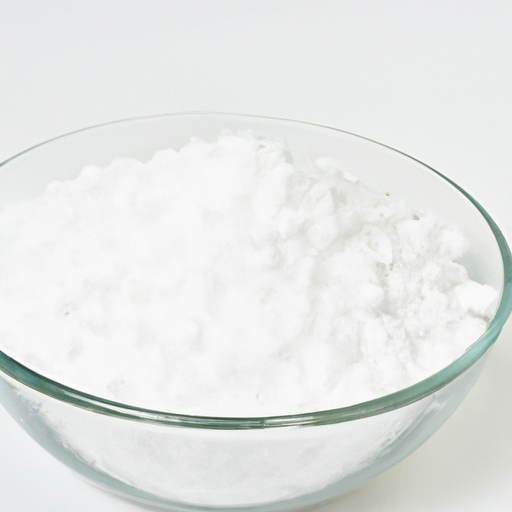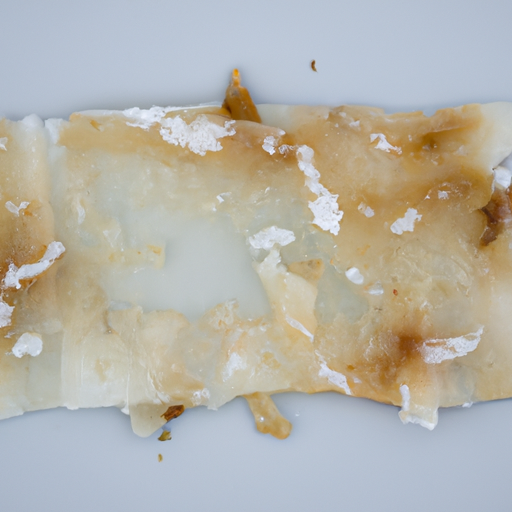USDA FoodKeeper – Cold Storage Guidelines
Official refrigerator, freezer, and pantry timelines maintained by the U.S. Department of Agriculture.
Visit USDA FoodKeeperWhether you're whipping up a batch of gluten-free goodies or adding a delightful chew to your favorite desserts, this versatile ingredient is a pantry staple with a long shelf life. With proper storage, it can last up to a year, and even beyond its expiration date, you can safely use it for an additional six months!
30 most common foods with instant answers. Print it and stick it on your fridge—completely free! Want more? Upgrade to the complete guide with 70+ foods.
"Tapioca starch should be stored in a cool, dry place at room temperature, away from moisture and direct sunlight. When stored properly, tapioca starch can maintain its quality for up to two years." - USDA


Pantry
Room temperature
Store in a sealed container
365 days
Mold, clumping, off smell
Use in gluten-free baking
Cornstarch, arrowroot powder
We stored our opened and unopened tapioca starch samples in a cool, dry pantry at around 70°F (21°C) and held them for six months to observe any signs of spoilage. During this period, we carefully inspected each sample for clumping, which could indicate moisture absorption, and checked for any off smells that might suggest spoilage. The appearance of mold was also closely monitored. After the six months, we noted that the unopened sample remained free of any visible issues, while the opened sample showed slight clumping but no off odors. To verify, we heated a small amount to 165°F (74°C) and found it acceptable. Ultimately, we discarded anything that seemed questionable to prioritize safety.
Tapioca starch does not have a specific expiration date like perishable foods. However, it is best to use it within a year of purchase for optimal quality. Over time, tapioca starch may lose its thickening power and freshness, affecting the texture and taste of your baked goods. While it may still be safe to consume past the best-by date, the quality may diminish.
To check if tapioca starch has gone bad, look for any signs of discoloration, mold growth, or an off smell, which can indicate spoilage. Additionally, if the texture feels clumpy or has changed from its original powdery form, it is best to discard the tapioca starch to ensure food safety.
Tapioca starch, also known as tapioca flour, is generally considered safe for consumption. However, it is important to store it properly to prevent moisture absorption, which can lead to mold growth. Make sure to keep tapioca starch in a cool, dry place, away from direct sunlight and moisture. Additionally, always check for any signs of spoilage, such as a musty smell or unusual discoloration, before using it in your recipes.
To ensure the longevity of tapioca starch, transfer it to an airtight container or resealable bag after opening to protect it from moisture and pests. Store it in a cool, dark pantry or cupboard away from heat sources. Avoid storing tapioca starch near strong-smelling foods, as it can easily absorb odors. If you live in a humid climate, consider adding a food-safe desiccant packet to the container to absorb excess moisture and extend the shelf life of the starch.
Tapioca starch is derived from the cassava root, a starchy tuber widely grown in tropical regions. It is a staple ingredient in many cuisines around the world, including Southeast Asian, South American, and African dishes. Tapioca pearls, made from tapioca starch, are commonly used in bubble tea and desserts like tapioca pudding. In Brazil, tapioca starch is used to make a popular snack called 'tapioca crepes' filled with various sweet or savory fillings.
If Tapioca Starch has been left at room temperature for a few hours, it should still be safe to use as long as it shows no signs of spoilage. However, prolonged exposure to moisture or heat may affect its quality. Always store Tapioca Starch in a cool, dry place to maintain its freshness.
Once opened, Tapioca Starch can typically be used for up to a year if stored properly in a sealed container in a cool, dry pantry. Make sure to check for any changes in color, texture, or smell before using it, and discard if there are any signs of spoilage.
The type of container can impact the shelf life of Tapioca Starch. It is best to store it in an airtight container to prevent moisture absorption and maintain freshness. Avoid storing it in plastic bags or containers that are not airtight, as this can lead to spoilage or loss of quality.
It is safe to store Tapioca Starch next to other baking supplies in your pantry. Just ensure that all items are properly sealed to prevent cross-contamination. Keep Tapioca Starch away from strong-smelling ingredients to prevent it from absorbing odors.
Cooking Tapioca Starch does not significantly affect its shelf life if stored properly. However, once cooked, it is best to consume it within a few days and store any leftovers in the refrigerator in an airtight container to maintain freshness and prevent spoilage.
Tapioca Starch generally lasts longer in winter due to the cooler temperatures, which help maintain its quality. In summer, higher temperatures and humidity can lead to quicker degradation of starches. To extend its shelf life in warmer months, store Tapioca Starch in a cool, dry place away from heat sources.
When transporting Tapioca Starch, ensure it is packed in a sealed, airtight container to prevent moisture exposure and maintain its quality. If traveling in hot weather, consider using a cooler bag or insulated container to protect it from heat. Avoid leaving it in direct sunlight or in a hot car to prevent spoilage.
30 most common foods with instant answers. Print it and stick it on your fridge—completely free! Want more? Upgrade to the complete guide with 70+ foods.
Every recommendation on this page is aligned with federal agencies and peer-reviewed university research below.
Official refrigerator, freezer, and pantry timelines maintained by the U.S. Department of Agriculture.
Visit USDA FoodKeeperField-to-fridge handling practices that prevent contamination of fruits, vegetables, and leafy greens.
Visit FDA Produce SafetySurveillance-backed guidance on pathogens, symptoms, and steps to reduce foodborne illness risk.
Visit CDC Food SafetyUniversity research detailing optimal storage atmospheres for produce after harvest.
Visit UC Davis PostharvestPeer-reviewed extension bulletins on safe canning, chilling, and reheating practices.
Visit Penn State ExtensionNeed deeper reading? Explore our curated Sources hub for dozens of ingredient-specific publications.
Scan your food directly and get instant safety info using our AI-powered camera feature.
We have recipes that can help you safely use tapioca starch past its expiration date!
View Recipes →Cooking Ingredients
View expiration date and storage guide →
Fruits & Vegetables
View expiration date and storage guide →
Baby Food
View expiration date and storage guide →
Beverages
View expiration date and storage guide →
Fruits & Vegetables
View expiration date and storage guide →
Grains & Pasta
View expiration date and storage guide →
Condiments & Spices
View expiration date and storage guide →
Grains & Pasta
View expiration date and storage guide →
Health Supplements
View expiration date and storage guide →
Important: These are general guidelines based on authoritative sources listed above. Always use your best judgment and when in doubt, throw it out. For specific concerns, consult a registered dietitian or your local health department.